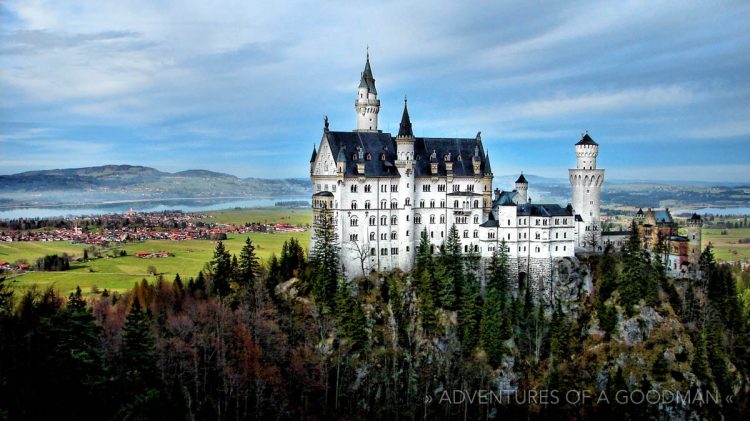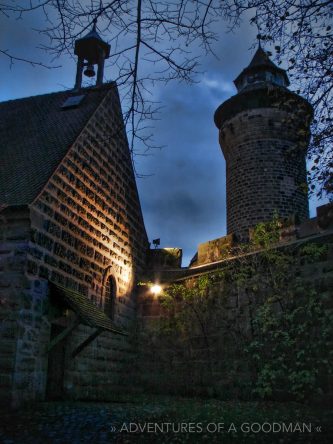GUEST POST OVERVIEW: Perhaps one of my favorite memories from my trip to Germany in 2006 was visiting Castle Neuschwanstein in Fussen, which is what Walt Disney based the Magic Kingdom on. So, it’s with great pleasure that I introduce a guest post by David Elliott on some more of Germany’s magical castles, while displaying photography from my own trip to Bavaria.

::::::::::::::::::::::::::::::::::::::::::::::::::::
In many regions of Germany castles are a dominant feature of the landscape. They simply can’t be missed, perched on distant hills and brooding over the towns and cities that cluster around their bases. These spectacular pieces of medieval architecture bring history to life here in all its turbulence and color, and most of them are open to the public all year round.

Some have managed to survive only as ruins, although these too have their peculiar romantic charm, whereas others have been modernized and refurbished down the centuries and are indeed still inhabited by members of the same families that built them all those years ago.
The most impressive and densest concentration of German castles can be found along the banks of the Rhine and Mosel rivers, straddling precarious cliffs and presenting a horizon of towers, turrets and battlements to visitors going down the rivers by tour boat. This is a truly Wagnerian landscape of cascading waters, soaring peaks and majestic fortresses, and you half expect to see the Rhine Maidens guarding their treasure and a shimmer of gold deep down in the waters.
In the Hesse region of western Germany, the best-preserved castle is at Marburg. At its heart is a 12th century building, but extensive refurbishment was carried out on it between the 14th and 16th centuries to create the solid, habitable structure that we see today.

At Eisenach in eastern Germany the Wartburg is the premier monument in Thuringia, and spectacularly beautiful to boot. It’s important not just because of its wonderful state of preservation, which makes it look as if it is just a few years old, but because of its associations with that formidable hero of the European Reformation, Martin Luther. Built in the 11th century by the amusingly-named Ludwig the Jumper, it dwarfs the town and was reputedly where Wagner’s famous Tannhauser singing contest was held.
Luther translated his German version of the New Testament here whilst in hiding from the Catholic authorities, who were bent on burning him at the stake. Its modern appearance of old-world, romantic and quintessentially German charm partly derives from tasteful and appropriate reconstruction work carried out in the 19th century.
For sheer majestic beauty, Burg Eltz, towering on a rocky outcrop far above the River Mosel, simply cannot be beaten. This stone confection of soaring towers and turrets really belongs in a fairy tale and has survived from the 12th century with only minor alterations, and there are literally hundreds of other castles of all shapes, sizes and periods scattered across this magical landscape. There are even several dating from as recently as the 19th century, such as Lichtenstein and Schwerin castles, the former a romantic Gothic remodeling and the latter designed to look like a French chateau.
With the German autobahn (highway) system being as efficient as it is, designed originally to get armaments quickly from one part of the country to the other but now extremely convenient for road trippers, a themed holiday such as a castle tour of the country is a great idea.
About the Author: David Elliott is a freelance writer who loves to travel, especially in Europe and Turkey. He’s spent most of his adult life in a state of restless excitement but recently decided to settle in North London. He gets away whenever he can to immerse himself in foreign cultures and lap up the history of great cities.
EXPLORE SOMEWHERE NEW
Nothing found.
BUY A PRINT
All photos on this site are available as limited edition fine art photographic prints. Please get in touch for sizes and rates.

